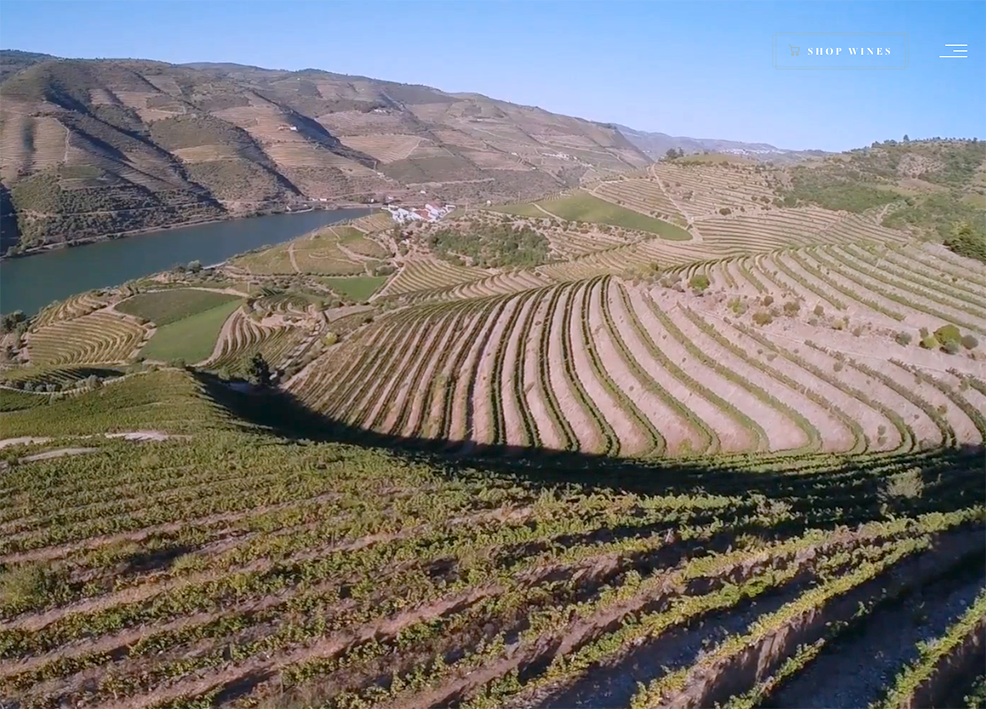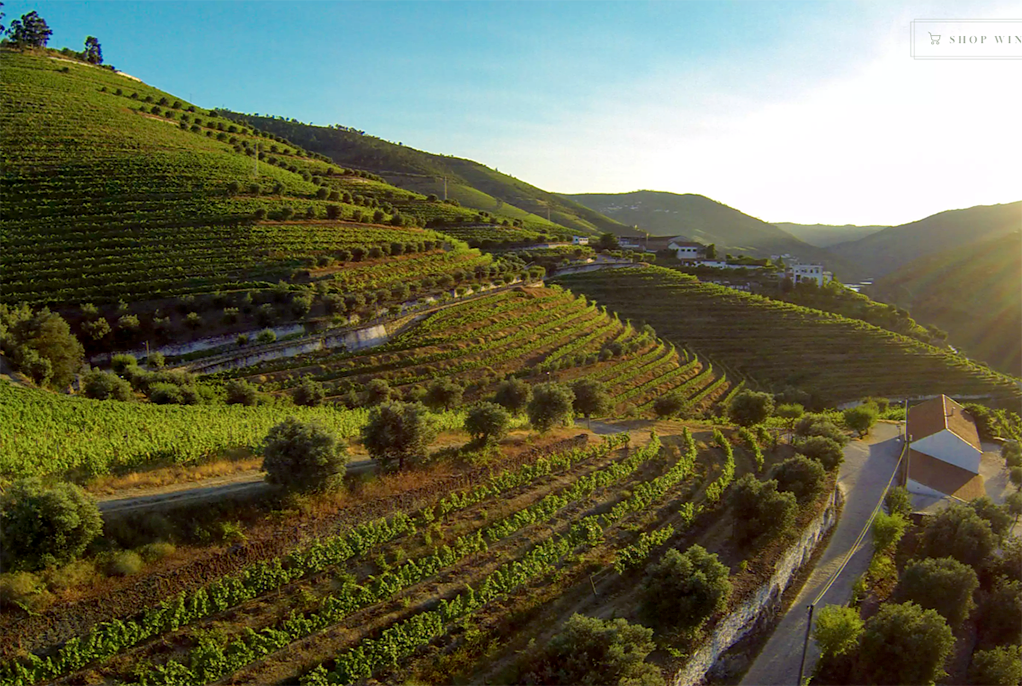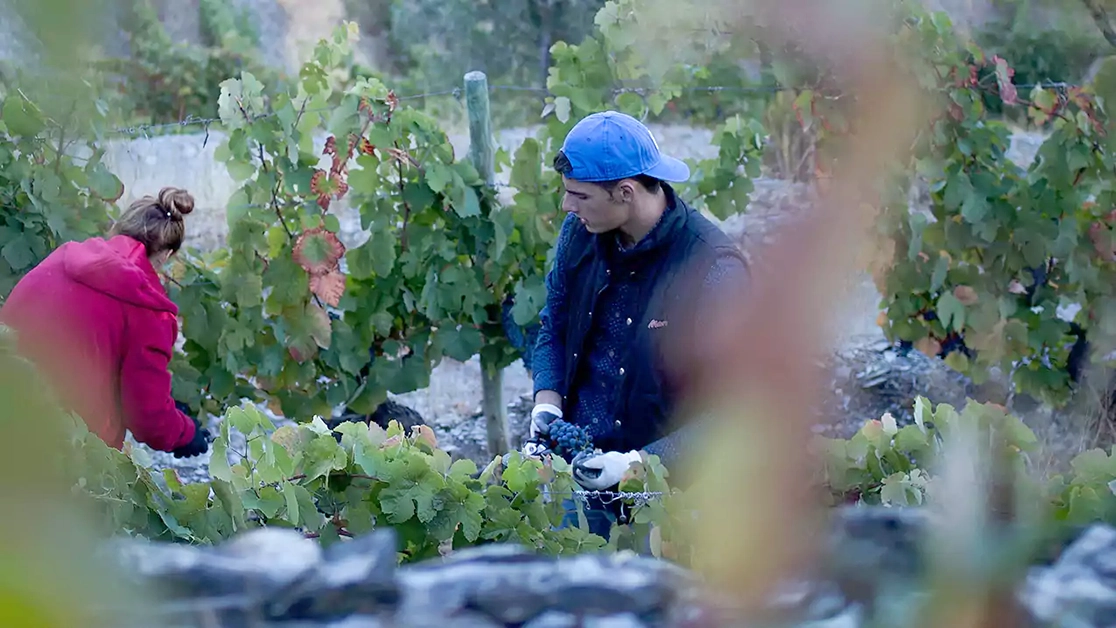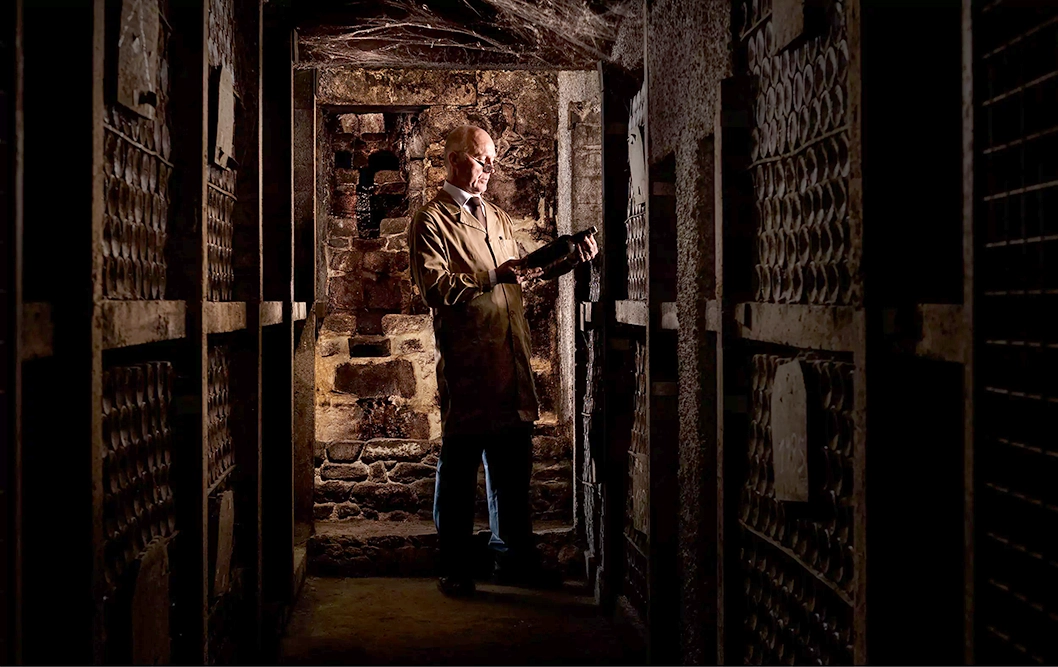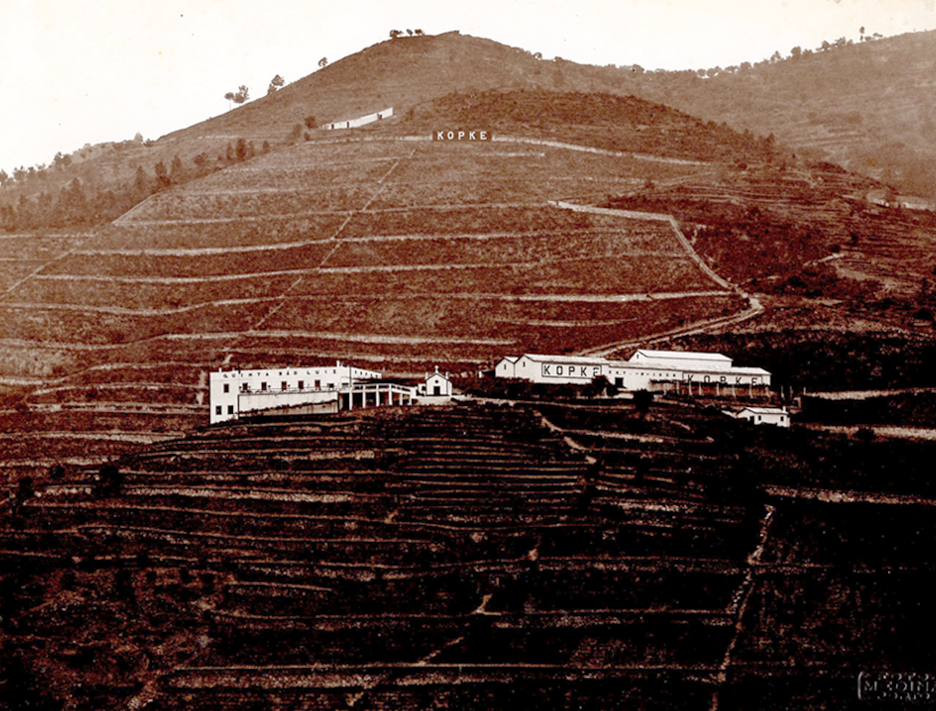Golden amber color; dried apricot, orange marmalade, raisin, grapefruit, lemon-lime, honey, fig, walnut, toasted almond, caramel, butterscotch, marzipan on the nose and palate.
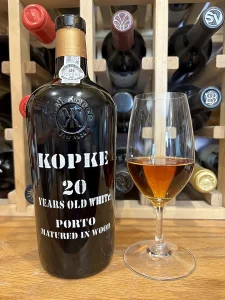
Sweet (127 g/L) with excellent balancing acidity (3.48 pH, total acidity 4.48 g/L). This is slightly on the sweet side of 20 year porto, but acidity rides smartly to the rescue to provide excellent balance. Rich, medium-plus body. Made with traditional Douro white grapes—arinto, viosinho, gouveio, malvadia fina. Fermented in stainless steel vats with maceration at controlled temperature at 60-65F. Fermentation stopped by addition of grape brandy in the traditional method. 20% ABV
After fermentation, the wine is trucked to Kopke’s lodge in Vila Nova de Gaia and drawn into Kopke’s extensive oak barrel collection. “20 years white” means the average of the vintages used is 20 years, with a range of seven years to decades. Kopke in particular is renowned for its collection of aging wine, which then is skillfully blended to maintain a precise flavor profile for each of their portos, including this one. Like Champaign houses, porto lodges take pride in consistently delivering a product true to their house style.
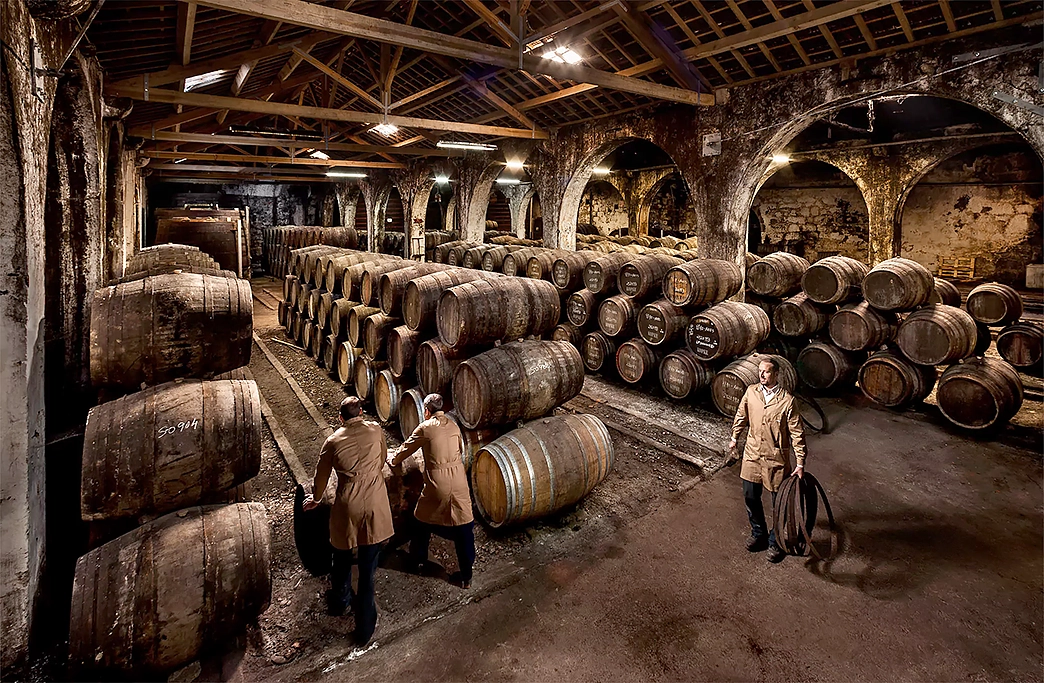
Kopke is the world’s oldest port wine house, founded in 1638. German diplomat Nicolau Kopkë traveled from Hamburg to Portugal with his son Cristiano. Two years later, he founded Nicolau Kopkë & Co., a shipping company that became the first Port House in history. In 1781 the company purchased a farm in the Douro and began a major turn in the business from a wine-buying and selling enterprise into a major wine producer.
In 1828, Cristiano Nicolau Kopkë, the great-great-grandson of the founder, sided with the Liberal party during Portugal’s civil war. After setbacks, the Liberals won a resounding victory in 1834, which ended Portugal’s absolute monarchy and replaced it with a more modern constitutional monarchy. In 1836, Cristiano Nicolau Kopkë was granted the title of Baron of Vilar. In 1841, the company changed its name to C.N. Kopke, which remains the name today. The front labels on the classic, distinctive bottles continue to be stenciled by hand.
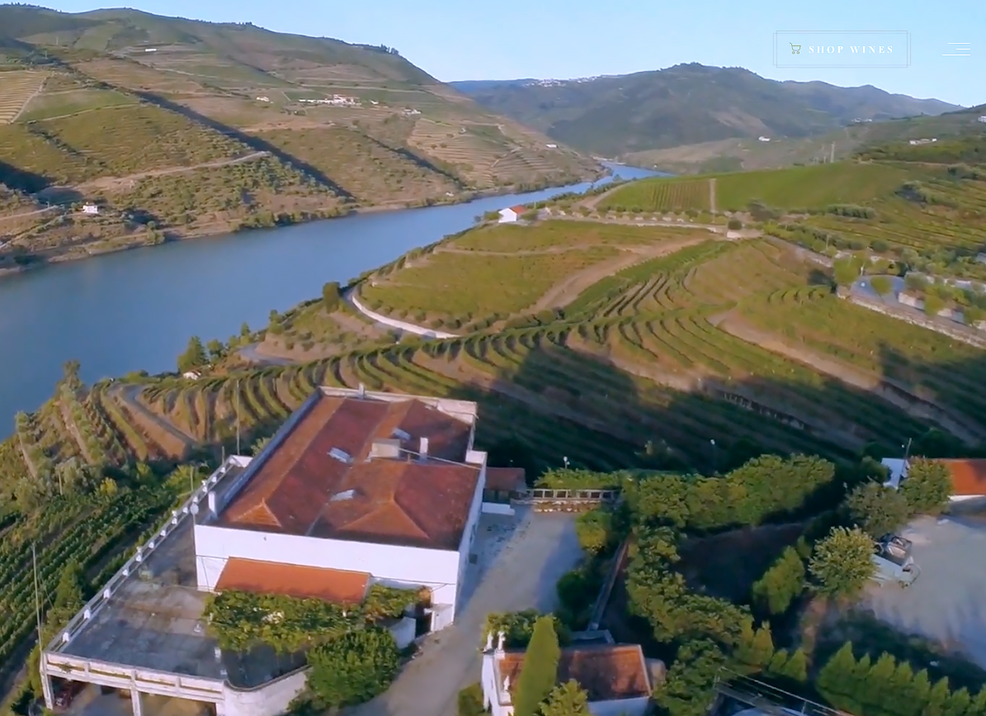
In 1922, Kopke acquired Quinta de São Luiz, which became the production site for all Kopke wines. The site is located in Tabuaço, on the left bank of the Douro River between Régua and Pinhão. The estate includes some 309 acres with 232 under vine, many of which are very old vines. In 1940, Kopke received official recognition as the oldest Port House in the world. In 2006, the Sogevinus Group acquired Kopke. Sogevinus was established in the 1990s and has become a major player in the production and distribution of porto. The company bottles almost nine million bottles of wine a year, with 7.8 million being porto. It exports to more than 60 countries.
The Sogevinus Group purchased an amazing gem. From 1953 until the 2006 Sovevinus acquisition, Kopke was owned by Barros, a rival port house. Barros did not push sales. Sogevinus found cellars filled with bottles that had not been touched for decades, some more than a century old. Sogevinus is releasing those wines in relatively small allocations to safeguard the stocks and not flood the market. Their oldest current release is from 1934. While porto often is associated with dark, rich wines, Kopke has a long and distinguished reputation for porto made with white grapes.
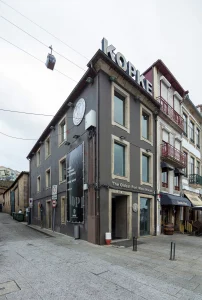
Kopke 20 Years Old White Porto is complex, multi-layered, a perfect balance of sweetness and acidity. Gorgeous, seductive, hedonistic delight. Intense palate presents layer upon layer of flavor while the sweet, rich, delicious fruit smothers all sensation of the 20% alcohol. Long, lingering finish is a marvelous coda to this symphony of porto pleasure. This easily shines sipped by itself in your library as eventide approaches, or as dessert in a glass after a sumptuous meal. In main courses, pair with savory dishes with elements similar to the wine’s taste profile—tagines with apricots, braised meats with prunes, duck with dried cherries. With appetizers—smoked almonds, marinated olives, thin-sliced cured meats smoked salmon. Desserts—fruit-based creations such as apple crumble, poached pears, citrus tarts; chocolate desserts with caramel or nuts elements; chocolate and pistachio pavé. Cheese—blue cheese is the classic pairing with white porto, so is aged gruyère; aged comté, fresh goat cheese, feta, manchegop armigiano-reggiano. $86
Kopke website, excellent opening video
